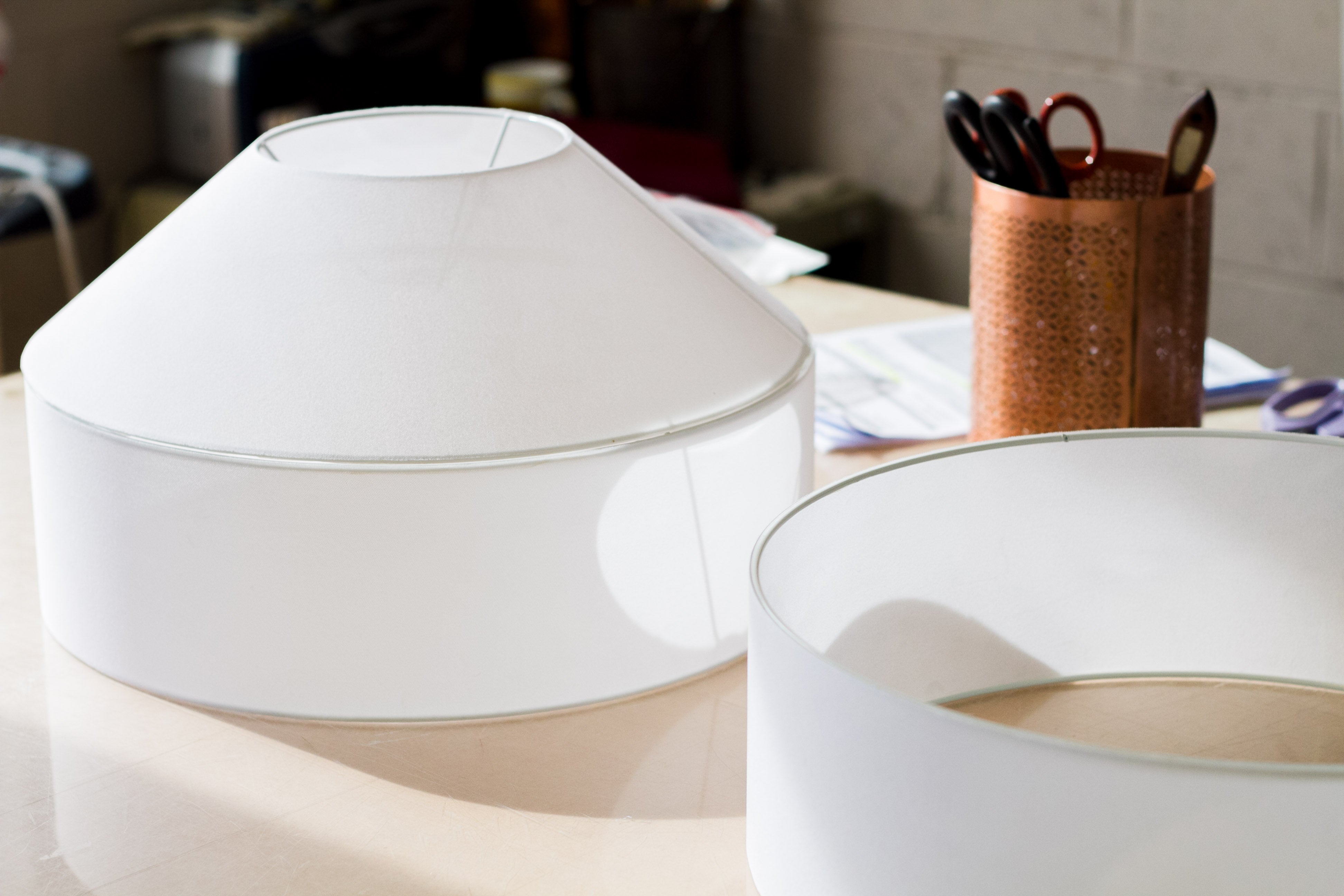
Rakumba recently celebrated its 50th anniversary! Can you tell us briefly about the history of the business and how it has evolved?
I’m privileged to be caretaker of the Rakumba brand, we design and make decorative lighting here in Melbourne. We owe our long heritage to the foresight of Lyndsay Betts who started Rakumba in 1968. In those days, we were known as Rakumba Pottery. We manufactured ceramic table lamps and handmade lampshades, primarily aimed at the residential market.
Nowadays, we work internationally, combining our heritage and global DNA to deliver authentic collections that are cosmopolitan yet uniquely Australian. Our collections bear stories deeply embedded within the design, forged by the care, the effort, the people and the hands that have had a part in making them.
We love to collaborate – with brands (like Coco Flip) working side by side with our studio to create their beautiful products.
You seem to work with a huge variety of materials and processes. How big is Rakumba’s production team and how do you manage so many different projects at once?
We have a relatively small production team of less than 20 staff. Our makers are all passionate about creating beauty at work and also in their lives outside the workshop. We are very fortunate to have a team of inspired designers, artisans, craftspeople, technicians – people who, by nature, are always on the search for new techniques, new materials, new finishes, new ideas. Complementing this amazing team, we have a strong focus on processes and systems to deliver quality, consistency and efficiency across a wide range of projects running concurrently.
Rakumba has been making our Mayu lighting collection for five years now! We know it’s an incredibly labour intensive and meticulous process. Can you please talk us through the stages involved in creating these luminaires?
Kate, you and Haslett will well remember how challenging it was to develop your beautiful Mayu collection. Mayu is the result of many many hours of design, research and development, care, attention to detail, mockups and prototypes and then continual refinement over several years.
The key aspect to making Mayu is craftsmanship. The shades are made by hand – the clear backing material is first cut extremely accurately to form the patterns required to make each conical and cylindrical shape, then the ultra-fine fabric is bonded to the backing with great care to preserve the even fabric texture. The individual forms are then made and stitched together to create each Mayu shade. Finally the internal lighting components are put together and tested and each Mayu luminaire is then assembled to create the final piece. Even the packaging process is completed with great care to preserve these special, fragile lights.

With travel off the cards for a while, there seems to be a renewed focus for local design and our own community here in Melbourne. What is most exciting for you about lighting design in Australia at the moment?
Lighting is a fantastic category of product design – it's one of the most complicated, because designers have to bring together form, lighting effects, complex technology and manufacturing techniques to create the final pieces.
The Australian design industry has particular challenges that are fairly unique internationally – so we have to work very very hard to overcome these. Challenges like geographic and cultural isolation from low cost manufacturing, a small local market, a market flooded with design copies on the one hand and some lingering concepts of cultural cringe – a feeling that Australian brands are in some way lesser than their international counterparts.
So there are two things that I find really exciting about lighting design in Australia right now. First, we’re seeing products that are increasingly sophisticated in both lighting effects and manufacturing. Whilst there is still a hesitance to invest highly in tooling, designers are becoming more confident using manufacturing techniques less constrained to simple fabrication and this has increased the scope of materiality, form and functionality. Second, designers combining sophisticated design with LED technology. Lighting design in Australia has fully graduated from the concept of simply inserting a light bulb in an object and calling it a light – we’re seeing luminaires designed and made in Australia that sit equally alongside top international brands, and that’s something we should all be very proud of.
What’s on the horizon for Rakumba in 2021? What are you looking forward to?
First and foremost, we’re looking forward to continuing to work with our wonderful partners – brands including Coco Flip, our special customers in the A&D industry and of course to growing our audiences in Australia and Internationally.
People tell us our collections feel familiar and yet surprising. Each collection is unique, partly because of the international DNA mix created by melding our design collaborators’ input with our in-house design studio talent. Rakumba is releasing several new collections next year. One with long-term collaborator Tom Fereday and another with Sebastian Herkner, and three totally new collaborations we’re bursting to spill the beans on but restraining ourselves and keeping somewhat under wraps for now.
We’re also excited about 2021 because our showroom collaborations with both Cosh Living and Sculptform will be fully open in the new COVID-normal way of life beckoning to us with open arms.
Rakumba's team produce our Mayu lighting collection



Images by Fran Parker and Haydn Cattach
See the full Mayu Collection